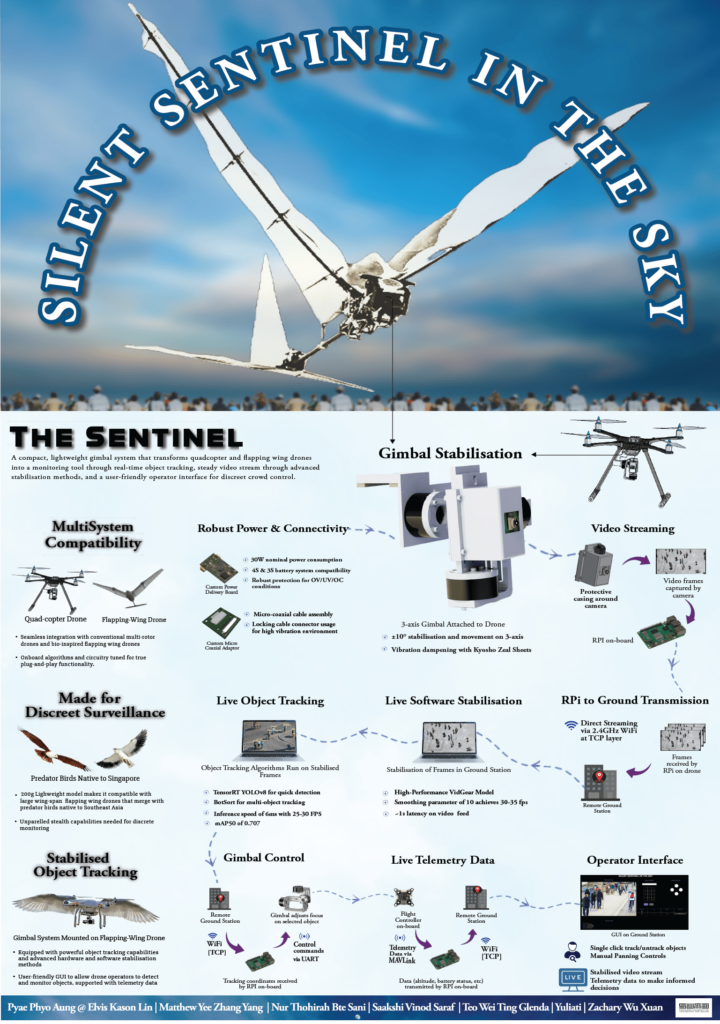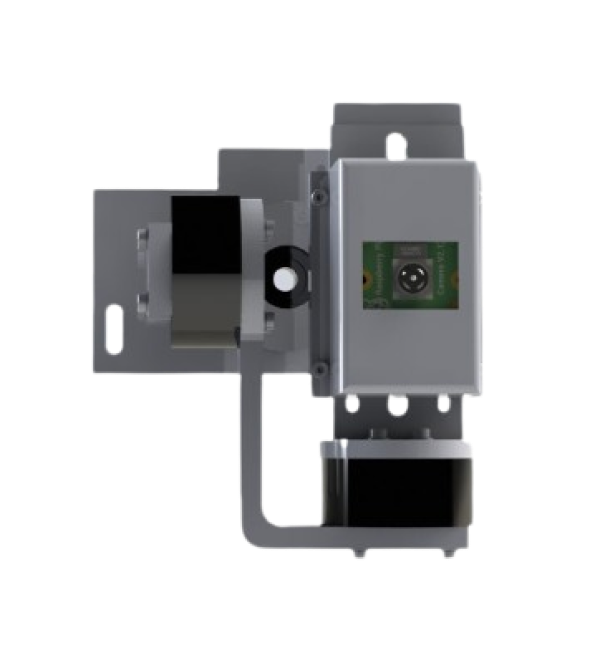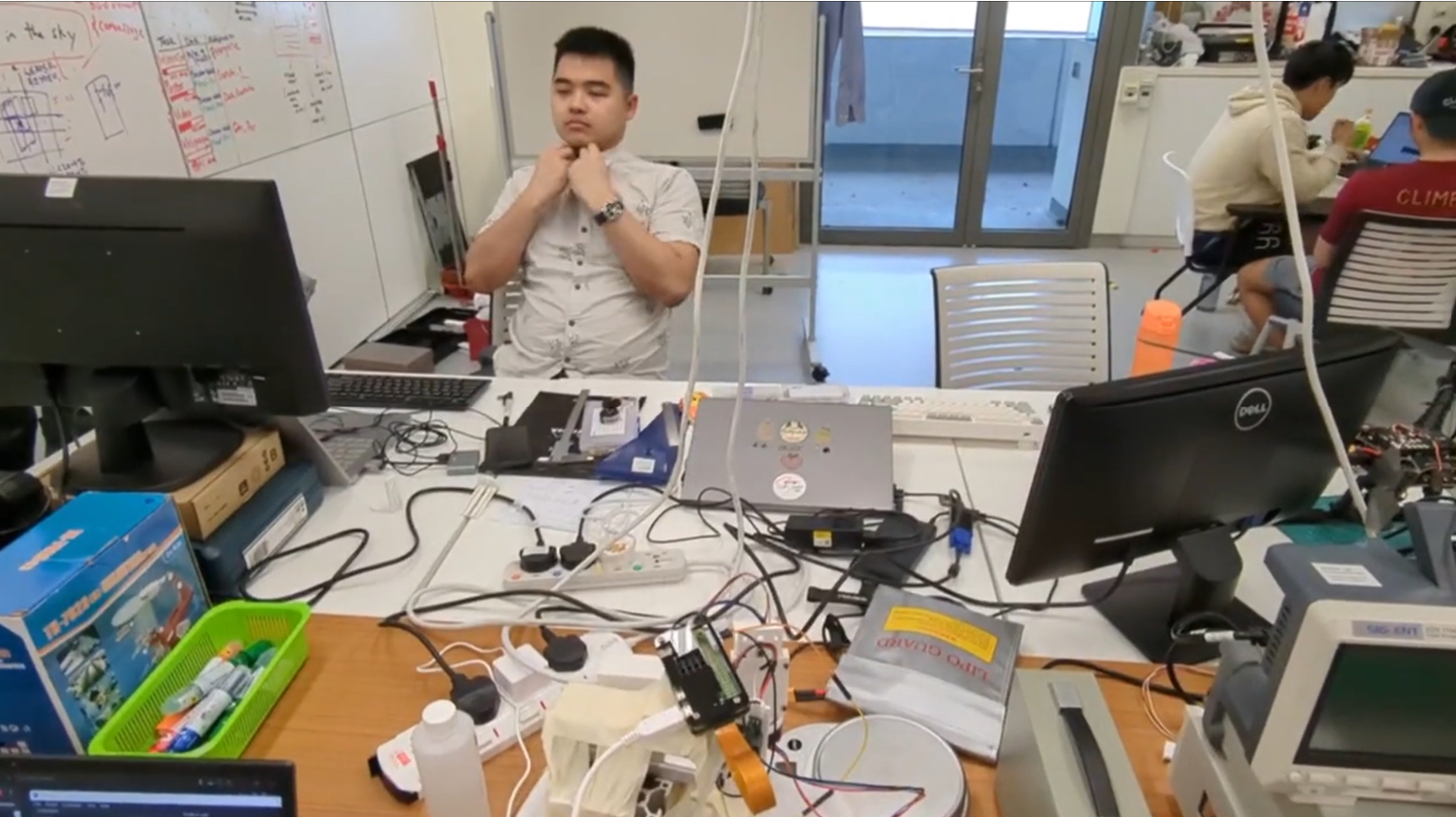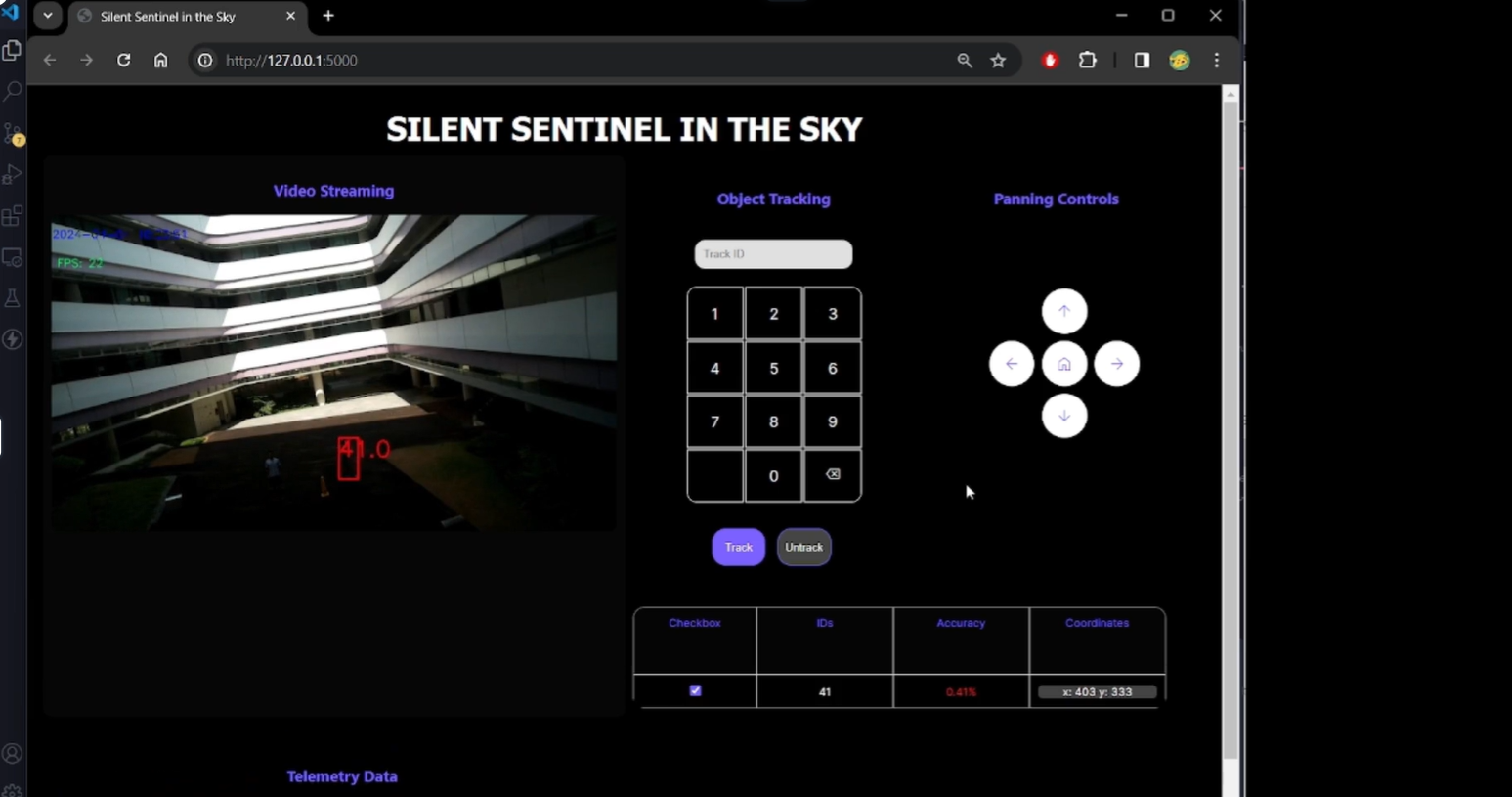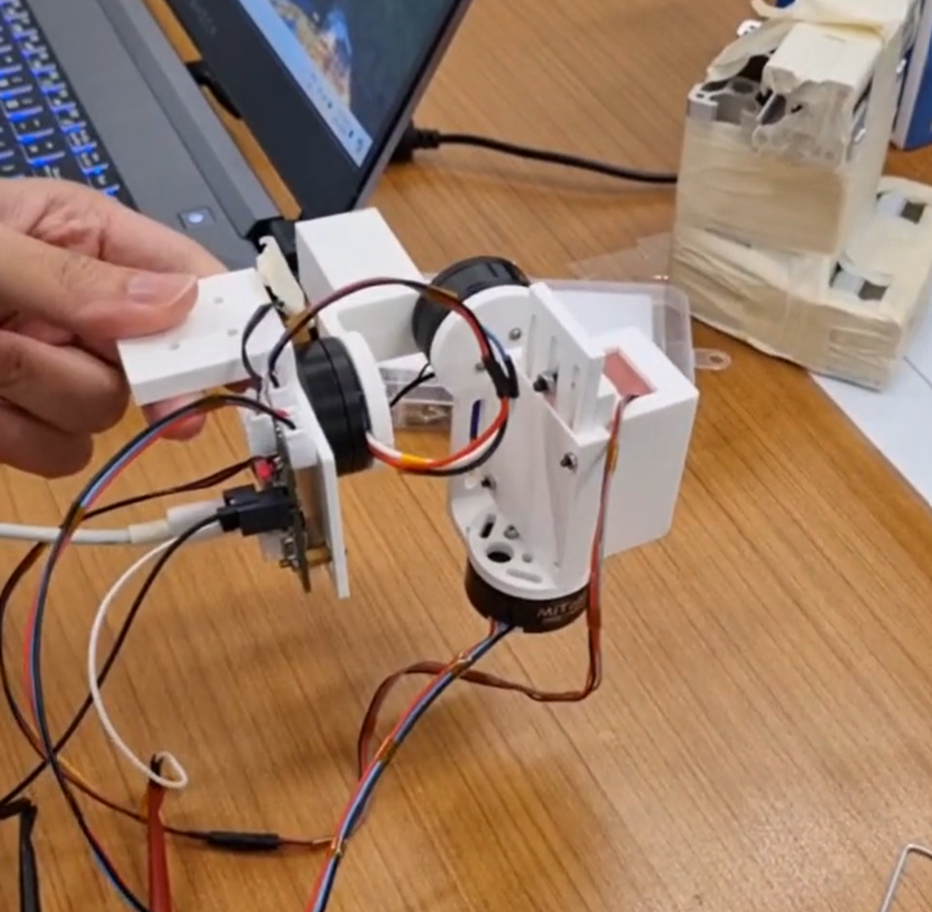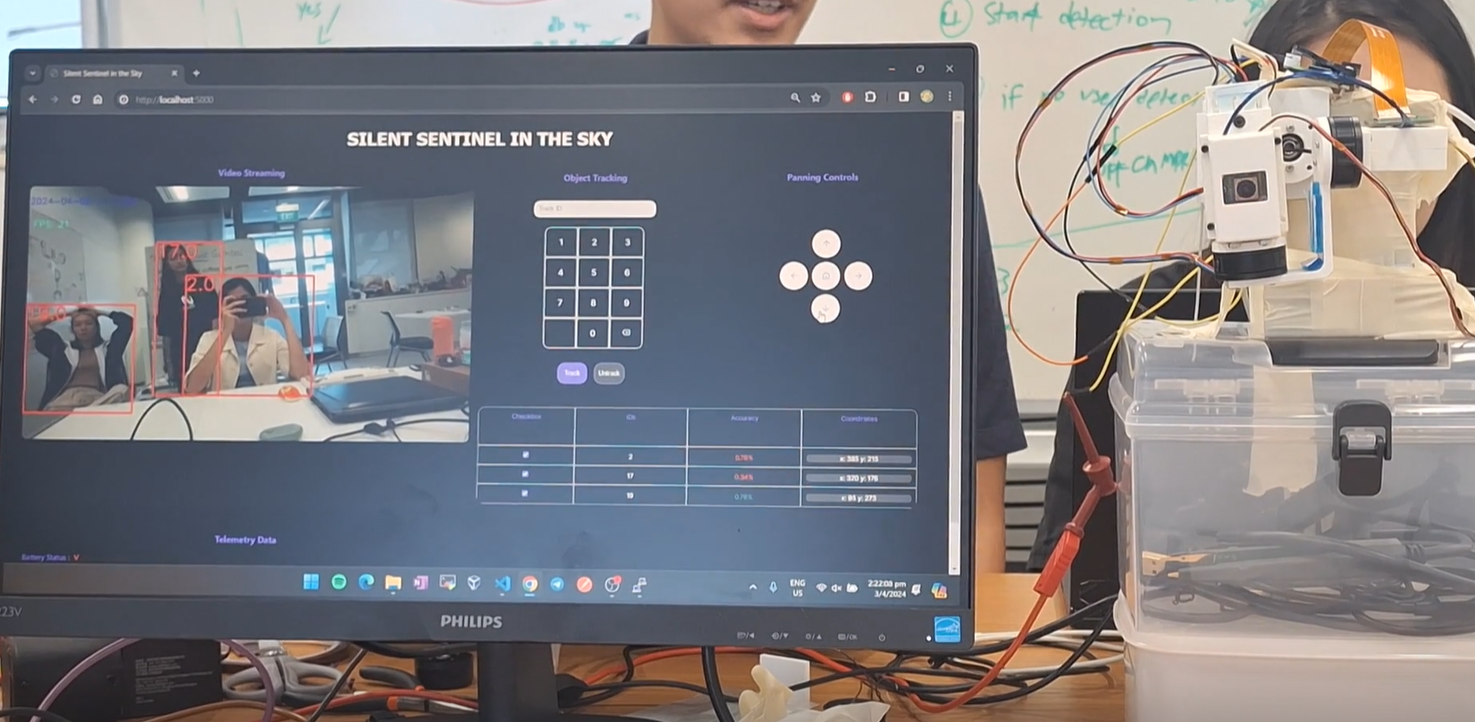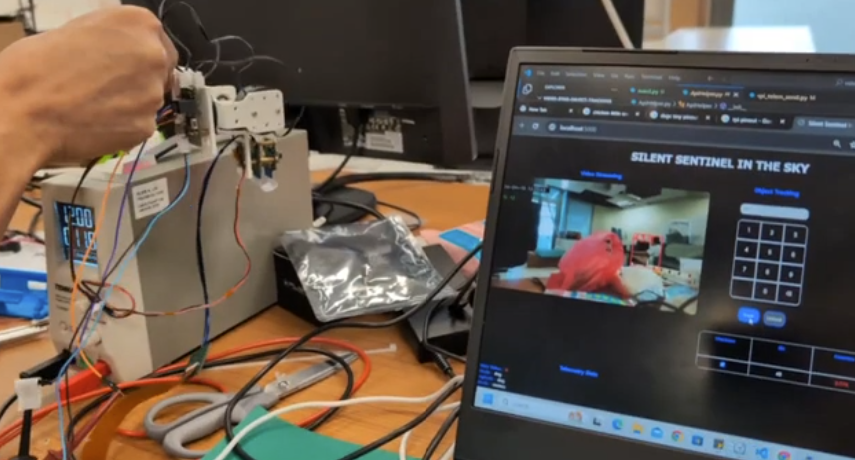< Quadcopter vs Flapping Wing >
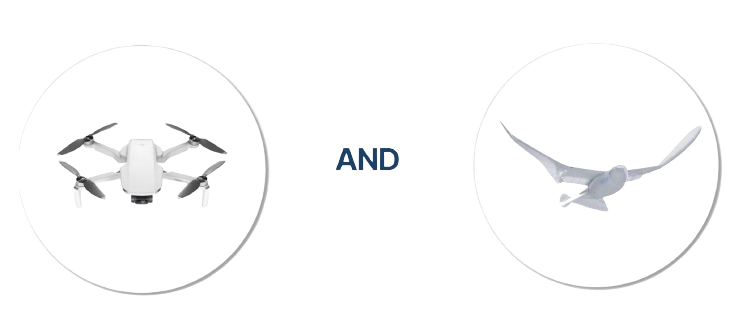
Quadcopter drones are a common sight, but they are often noisy and conspicuous, making them less than ideal for surveillance purposes. In contrast, flapping wing drones have a bird-like appearance, which allows them to blend in more effectively and operate more discreetly, making them a more suitable choice for surveillance applications.
< Features Overview >

When used for surveillance with an on-board camera suite, flapping wing drones face the problem of video instability. A robust and lightweight camera system stabilised using both hardware and software stabilisation methods needs to be implemented to counter the impact of the drone’s vibrational characteristics.
< System Overview >
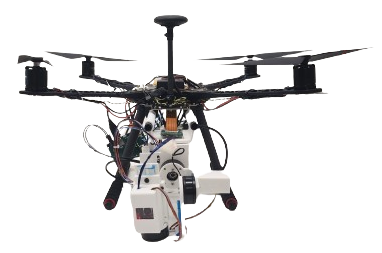
< Hardware Features >

>> Stabilisation System
The gimbal system consists of the Yaw, Pitch, and Roll axes. Vibrations in all three axes are counteracted, and with the additional Kyosho adsorption sheet, maximum counter-reaction to vibrations is achieved, resulting in optimal system stabilisation.
>> Gimbal Adapter to Drones
Our unique selling point is the plug-and-play capability of this gimbal system, allowing users to seamlessly connect it to their specific drone using the appropriate adapter. For instance, as depicted in the images, one adapter is designed for quadcopters, while the other adapter is tailored for flapping wing drones.

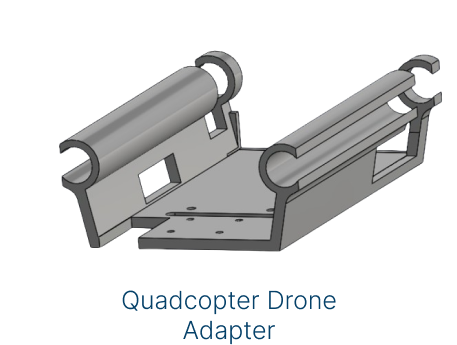
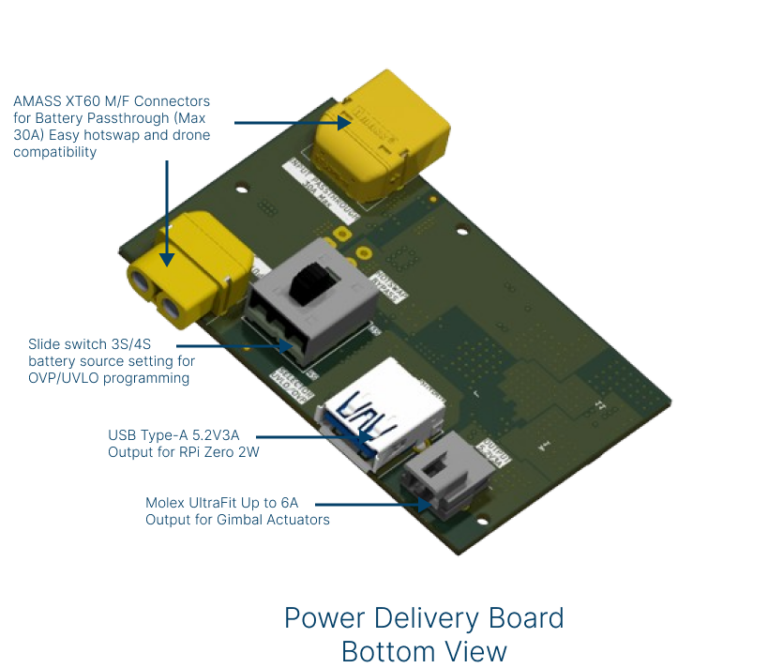

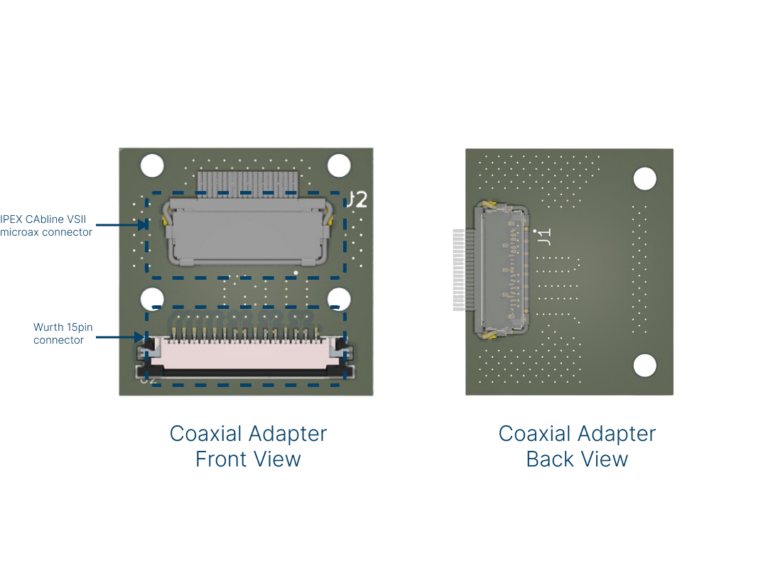
>> Robust Power and Connectivity
The gimbal system boasts robust power delivery and connectivity features, facilitated by a custom power delivery board and a coaxial adaptor.
Power delivery board (PCB):
- 30W nominal power consumption
- 4S and 3S battery system compatibility
- Robust protection for OV/UV/OC conditions
Coaxial adapter:
- Micro-coaxial cable assembly to our Pi camera
- Locking cable connector usage for high-vibration environment
>> Gimbal 2.0
Given the constraints encountered regarding weight and angle rotation, a novel gimbal has been developed, resulting in a reduction in weight from 204.9g to 142.9g.
Furthermore, this revised gimbal boasts increased freedom of rotation across all three axes.
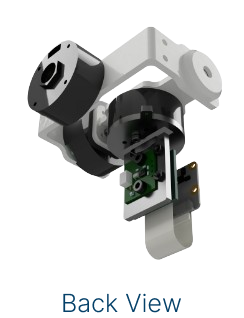

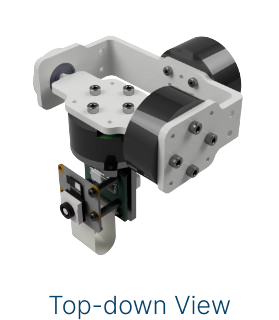
< Software Features >
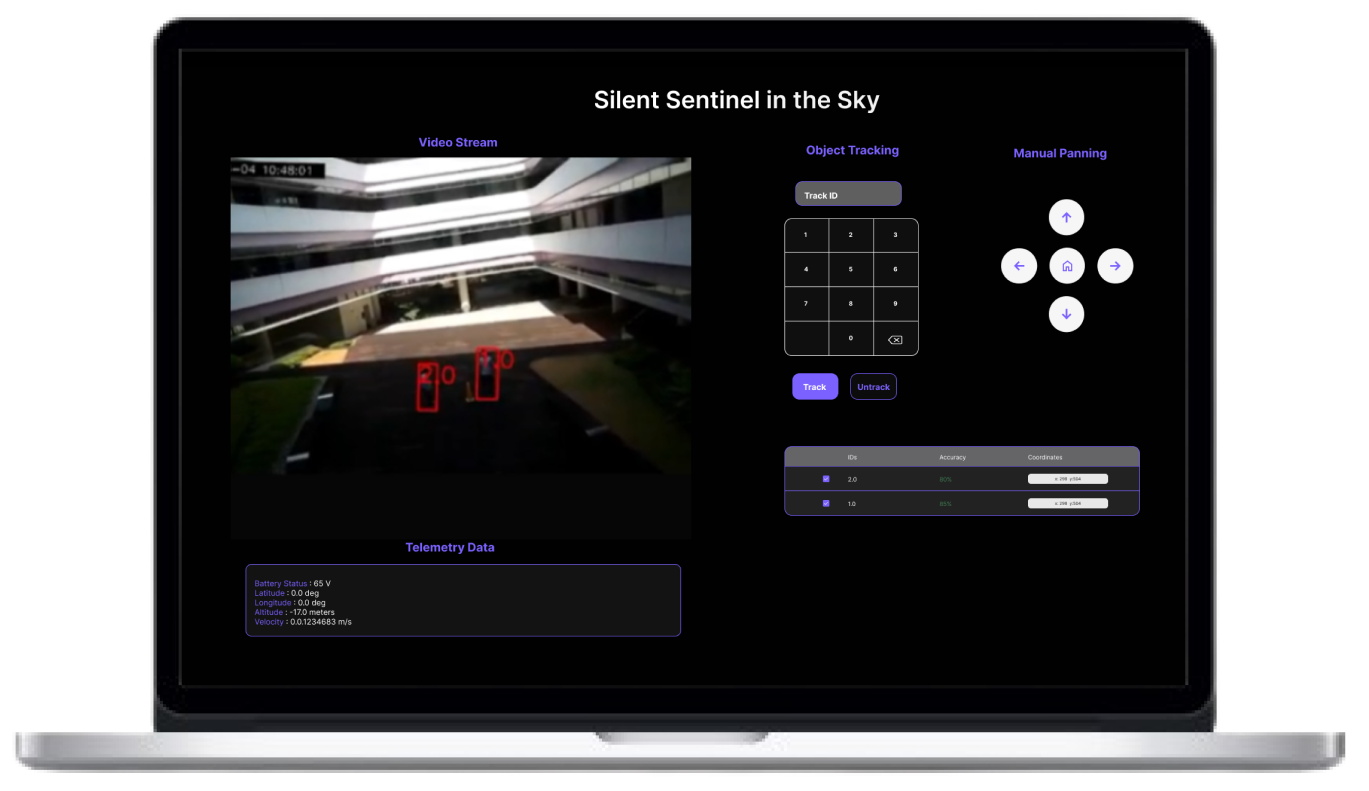
The project integrates four key components to optimise drone operations. Firstly, software stabilization combines object tracking and video stabilization, freeing the operator from the task of stabilizing the video feed. Secondly, a user-friendly GUI facilitates drone control and monitoring. Thirdly, the IoT component enables communication between the Raspberry Pi (RPI) and drone components. Finally, the object tracking model enhances tracking capabilities by focusing on people. Together, these components create an efficient system for controlling, monitoring, and stabilizing drone operations.

>> IoT Component
The RPI communicates with the drone’s camera, flight controller, and Simple BGC (Brushless Gimbal Controller). It retrieves live video frames from the camera and sends them to the ground station via a wireless transceiver. Additionally, the RPI collects telemetry data from the flight controller, sending it to the ground station for monitoring purposes. Furthermore, the RPI receives target coordinates from the ground station and communicates with the Simple BGC to adjust the camera’s position accordingly.
>> Graphical User Interface (GUI)
The GUI displays processed video frames from the object tracking and video stabilization model. Users can select subject IDs, toggle bounding boxes, and pan the drone’s camera. Additionally, the GUI provides live telemetry data from the drone, offering a comprehensive control and monitoring solution.

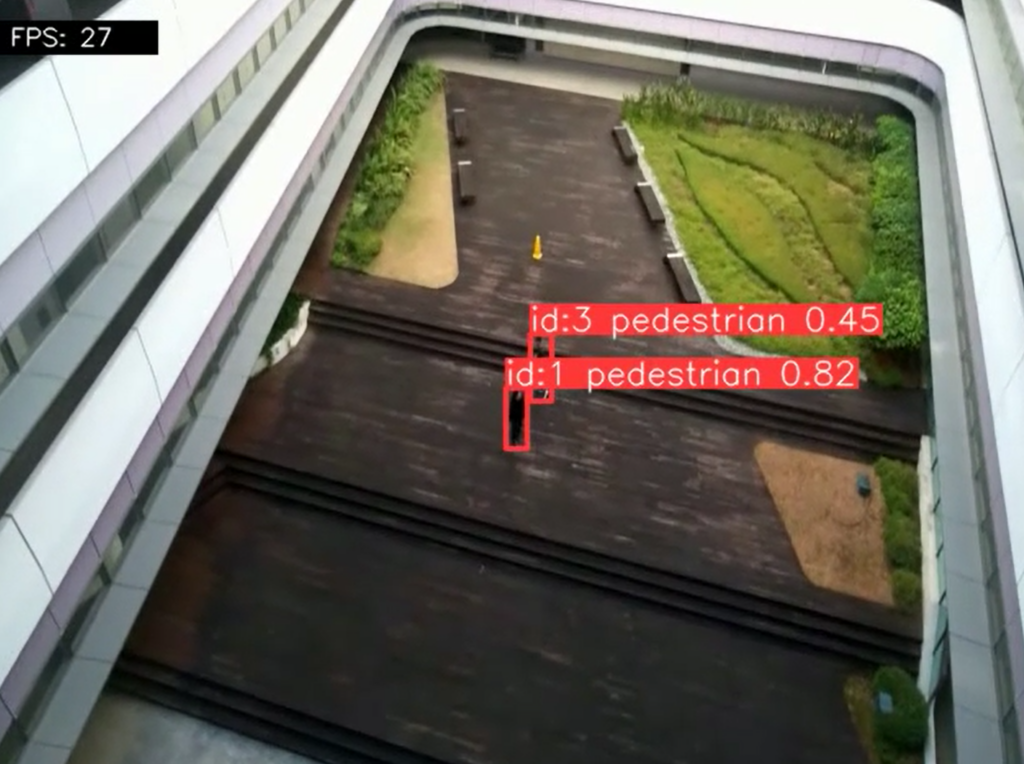
>> Object Tracking
The object tracking model used is a YOLOv8m object detection model with a BotSort tracking algorithm. Trained on the VisDrone, the model is specialized to detect and track only people from a UAV perspective.
>> Video Stabilisation
Video stabilization is implemented using the VidGear API and is utilized to process frames received from the drone’s live video feed. To ensure optimal performance, a trade-off is done between the number of frames stabilized and the resulting latency, striking a balance that delivers smooth video output while minimizing any delays in processing.
< Integration Demos >
Playlist
< Poster >
